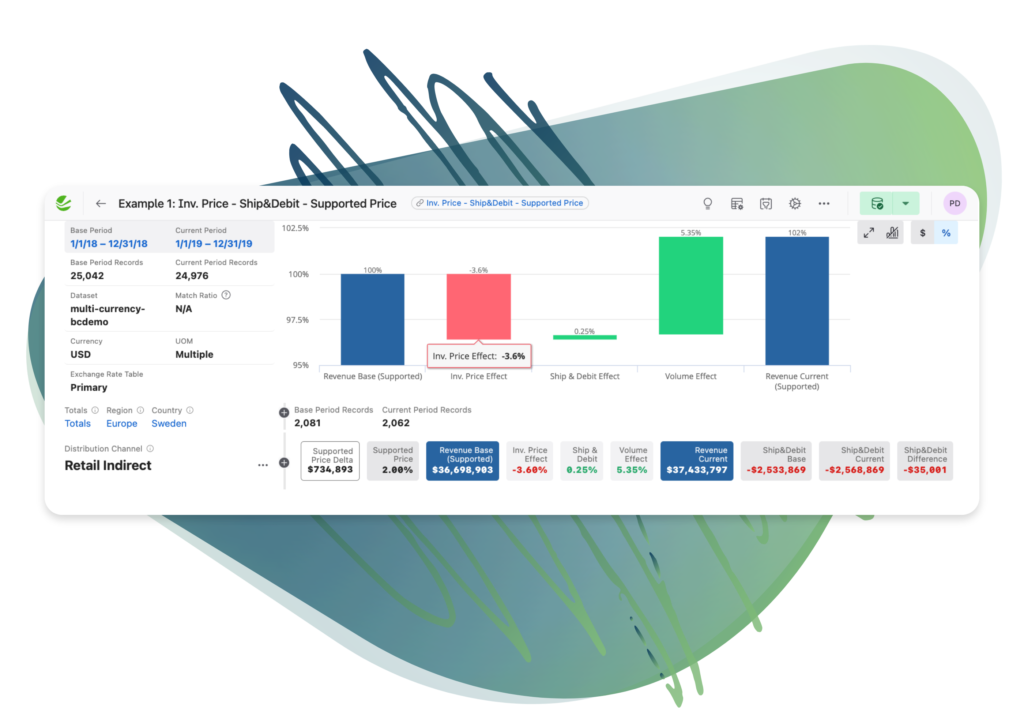
From sales and marketing, to product management and finance, pricing is uniquely positioned to collaborate with every other department in a given organization. But every department has differing and sometimes even conflicting goals. So how do you create organizational glue around pricing? Kalle Aerikkala, Business Consultant at Vendavo provides a glimpse at how Margin Bridge Analysis can help.
As a business function, pricing is a highly complex but attractive environment to work in. Personally, the best part of pricing has always been the collaboration with every other function in the organization. However, it is not always easy to find the glue to make all the functions stick together.
The pricing team has an ace up their sleeve to get everyone rallying around a common denominator. The element that brings all functions around the same table is Margin Bridge Analysis. The pricing function is the perfect host for this work, coordinating the margin bridge and ensuring it gets applied consistently.

How Margin Bridge Analysis Reaps Benefits for Everyone
From a 30,000 feet perspective, every function directly impacts at least one of the revenue or cost elements of the margin bridge. Sales and marketing functions, of course, carry the most weight when it comes to revenue and sourcing when it comes to several cost elements. By breaking down the development in the overall margin to suitable pieces and drilling down into markets, product hierarchy, customer hierarchy as well as other elements, ownership for each specific element can be attributed to a particular team in an organization. This is a great way to create a sense of importance for each group and individual. Here are three steps to take to get started:
1. Establish your margin bridge elements
Step one is to decide what elements you want to track. What margin bridge elements do you need to consider when it comes to revenue and cost? Do your sales consist of a single revenue element, or is it a combination of your product or service revenue accompanied by numerous surcharges and discounts? What cost elements are possible for you to track? Can you separate different components in variable cost or in cost to serve?
2. Decide on necessary drill down granularity
When looking at individual margin bridge elements, what levels do you and your team want the ability to drill down into? Do you want to understand the impact by market, customer, and/or product category? Defining the detailed classes will help you create your team assignments. As a result, each team is responsible for understanding and improving the underlying factors of their piece of business.
3. Practice, practice, practice
It is said that it takes 10,000 hours of practice to be the master of anything. When an organization decides to improve something collectively, it is easy to spend that time, so it should not be a problem to become an expert in using Margin Bridge Analysis and bring the organization together. The time and effort are well spent in creating the process and installing a culture of practice to the point where the margin bridge becomes part of routines for all teams.
Many large enterprises find it hard to efficiently and quickly analyze, simulate, and explain differences in revenue or margin changes overtime to the rest of their organization. Vendavo Margin Bridge Analyzer provides comprehensive PVM analyses across all your business dimensions. Reach out to one of our experts to learn more about how Margin Bridge Analyzer can help you achieve success. One $60 billion enterprise drove 100-plus basis points of margin with Margin Bridge Analyzer. Similar results are possible for your organization.
Discover the benefits of Vendavo Margin Bridge Analyzer and watch a demo here.